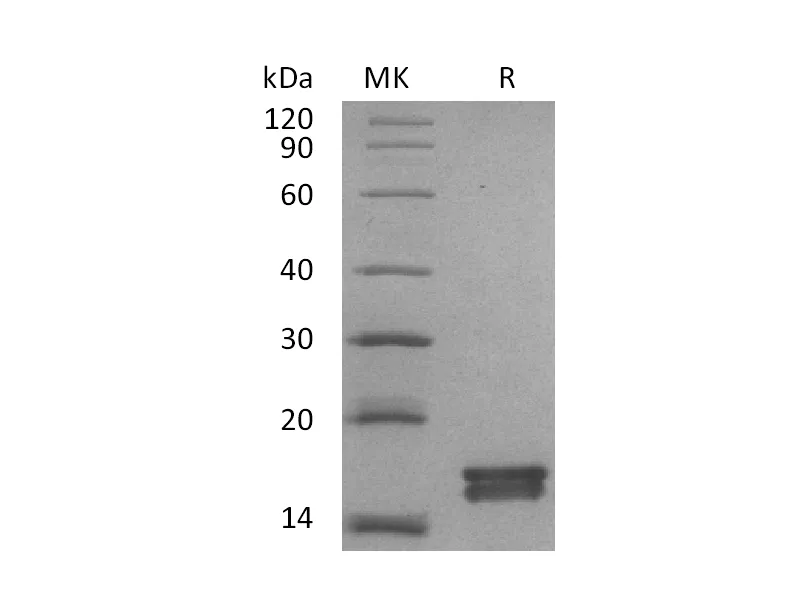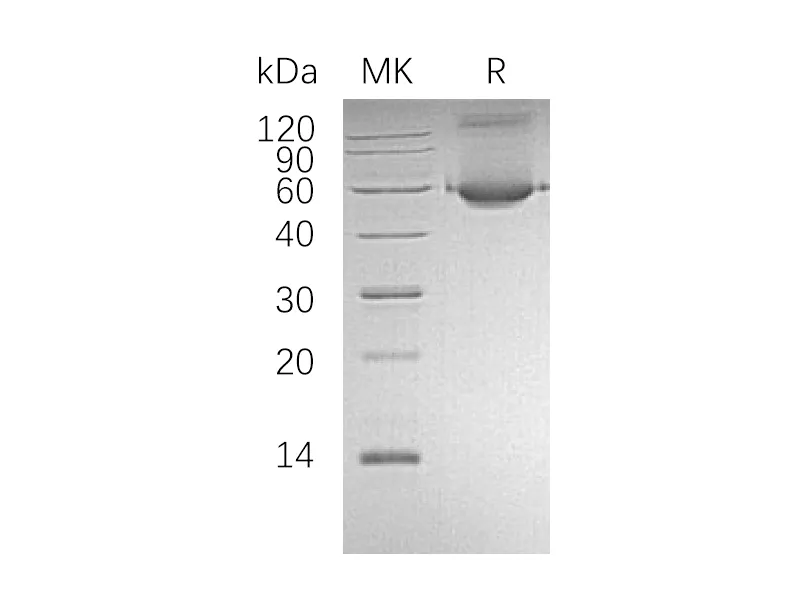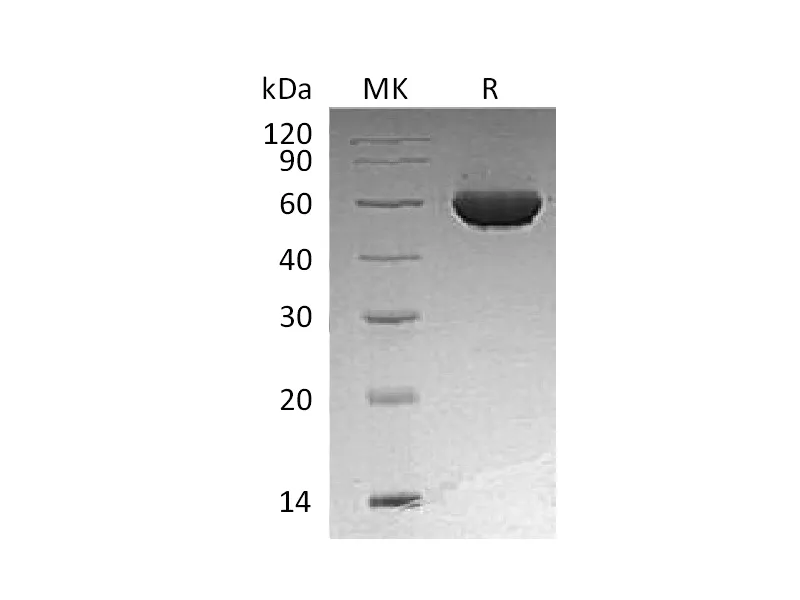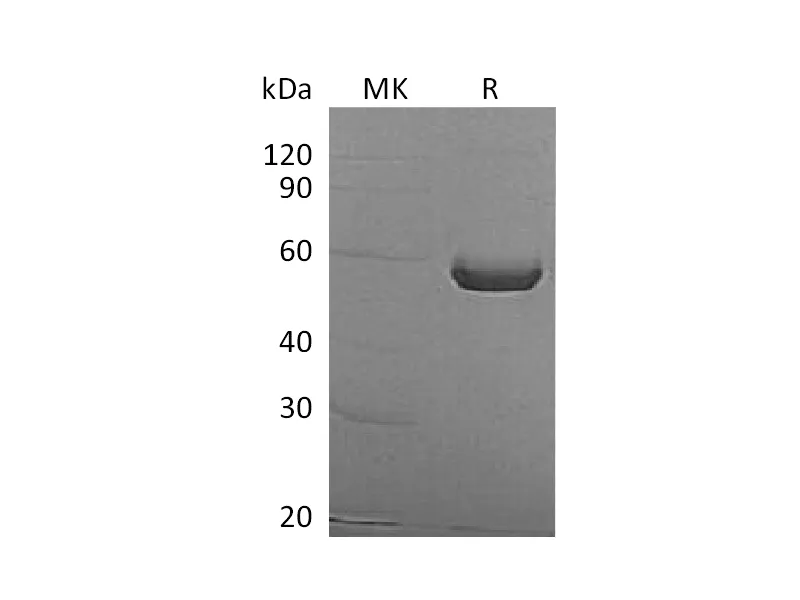Alternative Names
Neuronal pentraxin-1;NPTX1;NP1
Background
Neuronal Pentraxin (NPTX1, NP1) is a secreted glycoprotein within the Pentraxin family. NPTX1 is co‑expressed and forms heteromultimers with the related secreted protein, NPTX2/NARP, NPTXR (Neuronal Pentraxin Receptor) at excitatory synapses. Mature human NPTX1 shares 97% aa sequence identity with mouse, and rat NPTX1. It is produced by hippocampal, cerebral and cerebellar neurons, retinal ganglia and the inner nuclear layer of the retina. It is enriched on presynaptic axonal membranes where it forms complexes with NPTXR. It may be involved in mediating uptake of synaptic material during synapse remodeling or in mediating the synaptic clustering of AMPA glutamate receptors at a subset of excitatory synapses.
Note
For Research Use Only , Not for Diagnostic Use.




